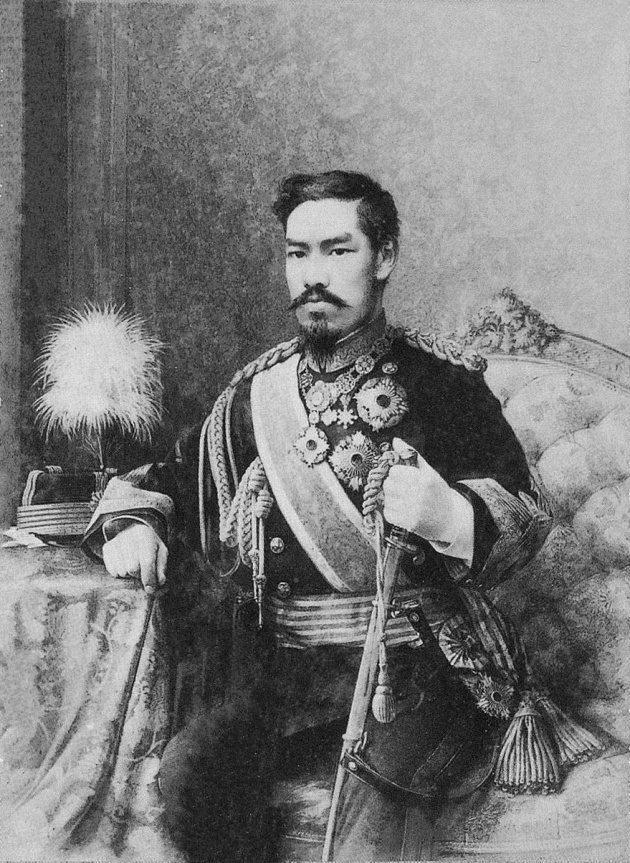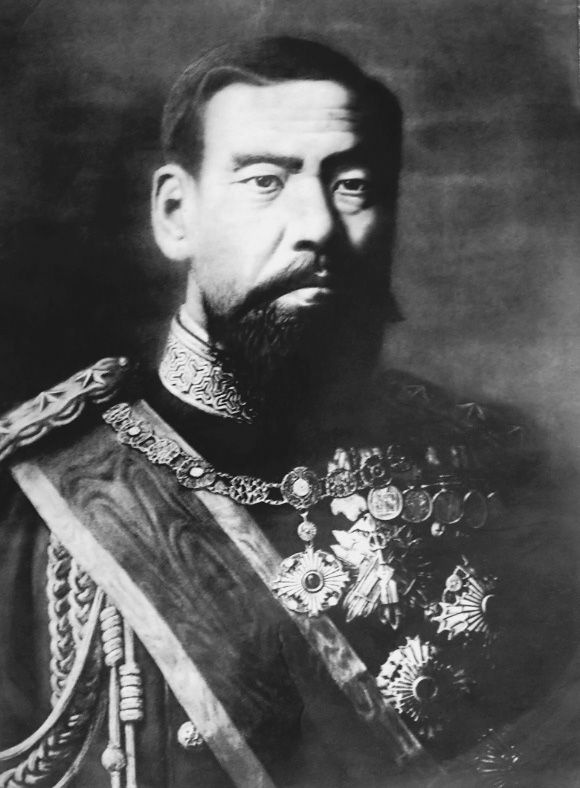As the young emperor was formally crowned in a grand ceremony, a name was given to the new era that his reign would usher in – Meiji, or enlightened rule. The emperor was keen to show that he was not his father’s son and rather than remaining in the dusty outdated traditions of old, under his rule Japan would embrace everything it needed to become the greatest country it could be. The samurai who had fought so strongly against the shogun’s attitude to foreign influence made it their primary aim to restore the pride and prestige of Japan around the world at any cost. They had fought for their emperor and helped him regain power, but Meiji’s revolution would not spare anyone who stood in the way of his country’s modernization – the ancient samurai warriors would soon find themselves in the firing line.
The call to ‘expel the barbarians’ of the shogun had transformed to an open-minded attitude of ‘civilization and enlightenment.’ This quest began by changing the very mode of governing itself. The revolutionaries created a council of state, and beneath them a government was formed. With such a dramatic shift in focus, the main concern was keeping the support of the Japanese population, which was easier in rural parts of the country where the emperor was still revered as an incarnation of god on Earth. Meiji sat at the top of the pyramid, the imperial head, and would prove essential in orchestrating the creation of a new and powerful Japan.
Having been so brutally introduced to a world that could crush them easily with their industrial weapons of war, Japan needed to fundamentally change if it had any hope of becoming a world power. The samurai had stood as the single absolute power for generations; there was a time when refusing to bow to a samurai could result in instant decapitation. The emperor and his ministers slowly but surely broke down the samurai class, first of all by taxing the stipends (a form of salary) that had proved such a financial burden for years, then by demanding all samurai turned their stipends into government bonds. The final deathblow, though, was the order for national conscription in 1873, which removed the ancient privilege of bearing arms reserved for samurai alone – now anyone could carry a weapon. This, along with the fact that new weapons such as pistols and rifles required much less skill to use (any farmer could now be trained to kill with a gun) decreased the samurai’s power further.
With the almighty samurai class abolished a new consciousness awoke across Japan and for the first time in thousands of years genuine social mobility seemed possible. A sense of opportunity swept over the land as suddenly everyone had the ability to improve their own lives, to make their fortune and to have a hand in shaping Japan.In rural regions, young men and women from generations of families who had tirelessly worked the fields joined together in ramshackle huts and wrote their own constitutions of what they thought Japan should be. After living in a strict class system ruled by the shoguns, suddenly everyone had a chance to have their voices heard.
The changes sweeping through Japan under Meiji weren’t gradual, but descended in an avalanche.The abolition of the ban on wheeled vehicles caused the rise in popularity of the rickshaw,horse-drawn trolleys and finally the symbol of Japan’s modernization itself, the train.
Just 15 years after Perry had bestowed a gift of a toy train to the shogun, a real one carried passengers from Tokyo or Yokohama. The emperor, ever a symbol for his country to follow, led the way in western fashion, dressing in smart Victorian-style suits, while citizens all over Japan added western umbrellas, hats, watches and shoes to their wardrobes. Although the emperor remained as a mostly silent figurehead for the nation, there was one cause he championed above all – education. As compulsory education was introduced for all children, education came to represent the path to a better life, transforming the once divided country into a land of equal opportunity for anyone willing to work for it.
The change of Japan from an obscure island state, rooted in the past, to a major world power was one of the most impressive and dramatic achievements of any nation in world history. Silk farms that had been tended by the same families for hundreds of years transformed into textile factories, and then just years later became steel mills, helping to equip the new efficient and powerful Japanese army. The world’s focus turned to Japan as the nation decimated their Chinese rivals in the Sino-Japanese War, and even toppled the mighty Russian army in the Russo-Japanese War. At an unprecedented pace, Japan had transformed from a backward feudal land to a major world power. The Japanese had achieved in less than 40 years what took the British and the Industrial Revolution 150.
Meiji’s modernization came at a cost, though, as children as young as 11 were put to work in textile mills, while coal mines were filled with prisoners, outcasts and poor farmers. Work in the scorching-hot shafts was essential for the country’s modernization, but in the 130-degree heat naked, starving men and women crawled, worked and died in the darkness. This was how Japan paid for its modernization and place in the world.
For away from these horrors the emperor sat at his royal court. An intensely private man, little is known about Meiji, even to this day. His steely expression and imperial hosting gave away little of his personality, even to those he was closest too. The only window into his soul are the poems he left behind, which tell the tale of a thoughtful and sensitive man who valued peace and unity above all. It then seems fitting that to this day he is revered not for the man himself, but instead as a symbol of the transformation of feudal Japan and for the enterprising, forward-thinking spirit that runs through Japanese society to this day.
Emperor Meiji (Part 2)
Posted on at



